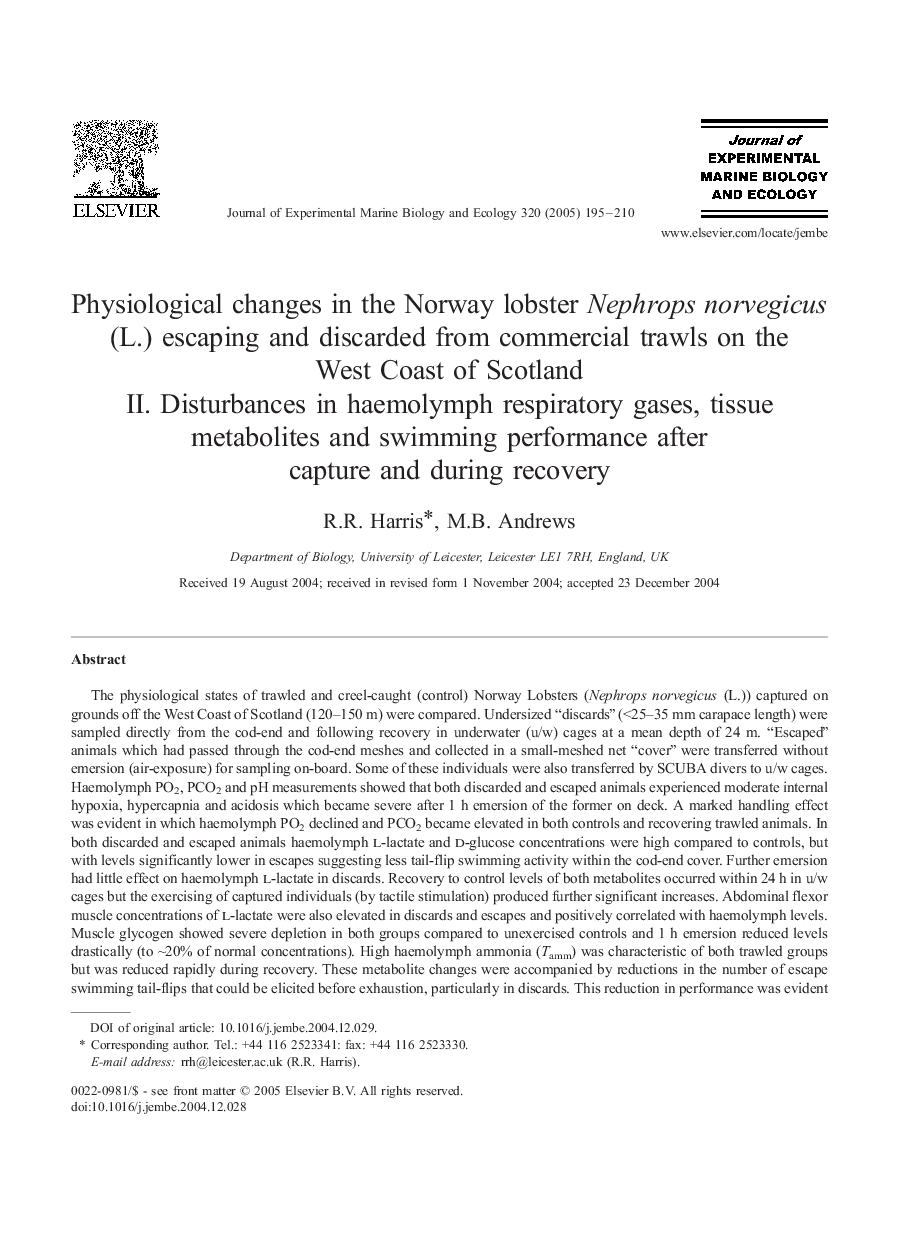| Article ID | Journal | Published Year | Pages | File Type |
|---|---|---|---|---|
| 9448678 | Journal of Experimental Marine Biology and Ecology | 2005 | 16 Pages |
Abstract
The physiological states of trawled and creel-caught (control) Norway Lobsters (Nephrops norvegicus (L.)) captured on grounds off the West Coast of Scotland (120-150 m) were compared. Undersized “discards” (<25-35 mm carapace length) were sampled directly from the cod-end and following recovery in underwater (u/w) cages at a mean depth of 24 m. “Escaped” animals which had passed through the cod-end meshes and collected in a small-meshed net “cover” were transferred without emersion (air-exposure) for sampling on-board. Some of these individuals were also transferred by SCUBA divers to u/w cages. Haemolymph PO2, PCO2 and pH measurements showed that both discarded and escaped animals experienced moderate internal hypoxia, hypercapnia and acidosis which became severe after 1 h emersion of the former on deck. A marked handling effect was evident in which haemolymph PO2 declined and PCO2 became elevated in both controls and recovering trawled animals. In both discarded and escaped animals haemolymph l-lactate and d-glucose concentrations were high compared to controls, but with levels significantly lower in escapes suggesting less tail-flip swimming activity within the cod-end cover. Further emersion had little effect on haemolymph l-lactate in discards. Recovery to control levels of both metabolites occurred within 24 h in u/w cages but the exercising of captured individuals (by tactile stimulation) produced further significant increases. Abdominal flexor muscle concentrations of l-lactate were also elevated in discards and escapes and positively correlated with haemolymph levels. Muscle glycogen showed severe depletion in both groups compared to unexercised controls and 1 h emersion reduced levels drastically (to â¼20% of normal concentrations). High haemolymph ammonia (Tamm) was characteristic of both trawled groups but was reduced rapidly during recovery. These metabolite changes were accompanied by reductions in the number of escape swimming tail-flips that could be elicited before exhaustion, particularly in discards. This reduction in performance was evident in discards even after 24 h recovery, but escapes showed almost normal responses. The severity of the physiological stresses experienced during trawling, and to a lesser extent in escaped animals, and their effects on recovery of undersized discards regaining the seabed, is discussed. These findings may help us predict the survival, longer-term recovery and fitness of fished N. norvegicus, and their potential contribution to the regeneration of exploited populations.
Related Topics
Life Sciences
Agricultural and Biological Sciences
Aquatic Science
Authors
R.R. Harris, M.B. Andrews,
